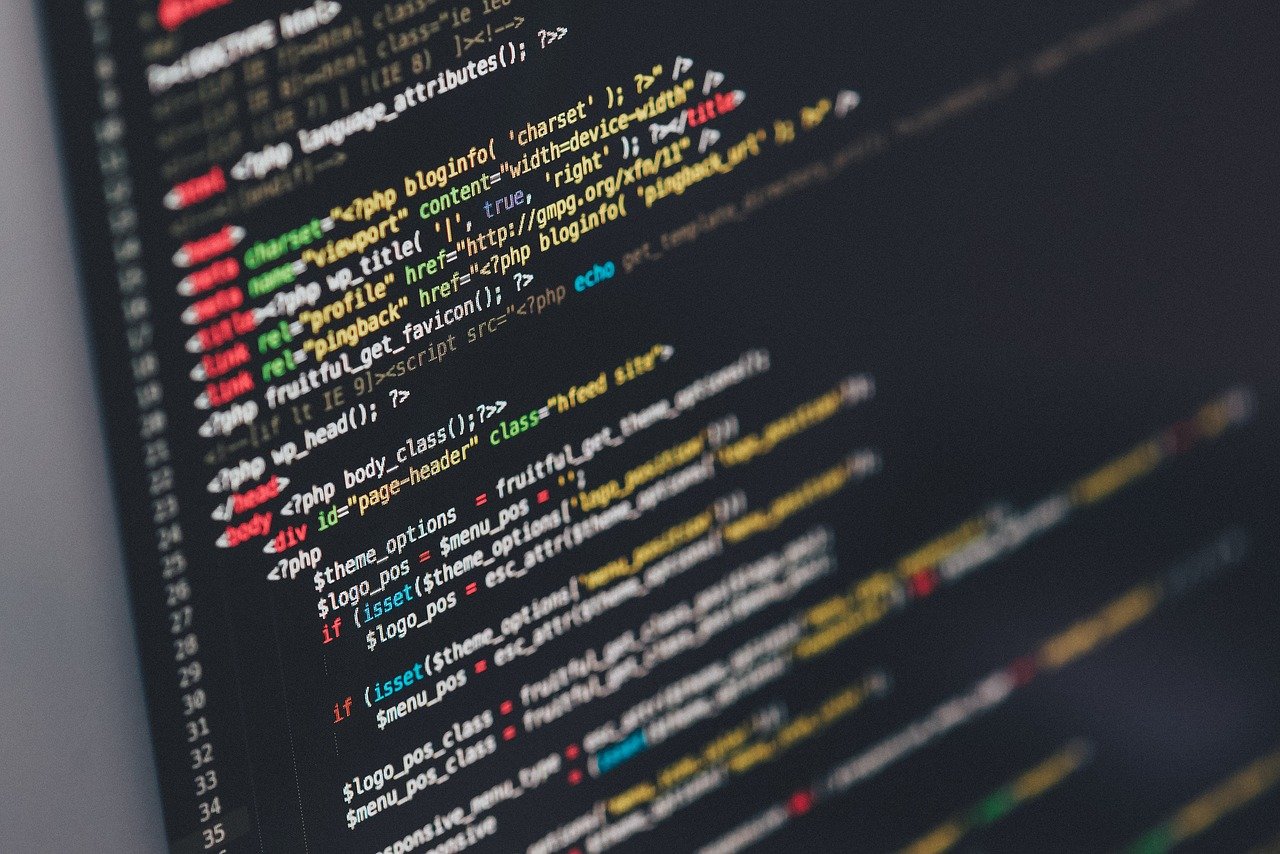Internet comes with many benefits. It has revolutionized our society and helps us stay more commected through instant communication, amongst many other things. But everything has pros and cons, and one of the greatest risks of internet and computer networks is cybersecurity and the risks that comes with using a computer network.
The good news is that there are plenty of ways you can go about securing a computer network. The first step is being aware of the risks, and the second is to take appropriate action to protect your computer and your data. Keep in mind that if you neglect safety, it can affect both yourself and others.
Security is important for all networks, but especially for wireless networks. Hackers can easily monitor and hack wireless network traffic, as these are common radio signals. They can extract information such as passwords and credit card numbers if the traffic is not encrypted.
This is why you should avoid unknown, open networks that you find, for example, out in the city, at airports, cafés and so on. You have to use them, and do nothing that sends passwords, or anything else important. That is, do not retrieve email, do not log in anywhere and do not disclose any personal information.
A solution for this is to use a VPN.
No computer, or mobile phone and tablet for that matter, is completely safe from malicious code. And yes, this also applies to Apple’s computers and mobiles. Fortunately, there is a lot you can do to minimize the risks.

Contents
How to secure a computer network and stay safe online
Use secure passwords
This is one of the most basic yet important steps for keeping your information safe when using a network.
We mainly make two mistakes when choosing and using passwords. On the one hand, it is often far too short and thus easy to guess, and on the other hand, we use the same password for several of our accounts.
It is not uncommon for hackers to access the user databases of various online services. Even if the passwords are encrypted or hashed, ie not visible in clear text, they are not completely secure. Hackers that come across the database can try to crack the encryption on their own computer with the help of special programs. This method can be compared with trying to log in billions of times a second. Through this method, they may be able to finally find your password.
The program can compare it to a list of common words or simply guess all the possible combinations. With this said, you should avoid having one name or word as a password. It is also less good to have a short password.
A good password is long and contains both uppercase and lowercase letters, numbers and other characters. The downside of this is that the password becomes difficult to remember. A good solution is therefore to use a whole sentence that means something to you as a password, and put in numbers or other characters. For password security, lenght is considered extremely important.
Moreover, hackers know that a lot of people use the same password for several accounts. As such, if they do manage to crack your password, they will be able to test it on all kinds of different services. The greatest risk is if hackers are able to get access to your email account. Because if they do, they can click “forgot password” on other websites, reset the password, and then get access to your various accounts. With this said, it is important that you use a really good and unique password for your email.
Two-factor authentication
A great safety measure for your acccounts is to use two-factor authentication. This means that it is not enough to just have your email. The login also needs to be authenticated on a third-party, most often your mobile phone, for example by receiving an SMS with a code that you also have to enter. For additional safety, a lot of services and websites now use two-factor authentication, such as Gmail and Facebook.
Another clever and effective safety measure is to write down a long and complicated password on a note and keep it. When doing this, make sure that if you would accidentally lose your wallet, the finder will not be able to guess what it can be used for.
Another step is to simply write a bunch of random numbers and characters on your keyboard when creating your password and then when you log in the next time, you simply choose “forgot password” to get a new one every time.
Protect your connected devices
Your home network is not stronger than your weakest link. This means that the devices you use on the network should also maintain a high level of security. This can be a challenge because today we have so many different devices and some of them may be used by, for example, children who are not as careful.
A good start is to see which devices are connected to the home network. This can be done with a simple network scanner. There are several apps that can help you with this. By running a scan, you can see which devices are connected, which provides a list of the connected devices, as well as their respective mac and IP addresses. This way, you can also discover if there is any device that does not appear to be your own.
After your devices are identified, you need to make sure that your devices are as protected as possible, which for someone who is not an IT security expert can be seen as a difficult task. But these are the most important and basic steps:
- Always update the operating system, browser and software to the latest version as vendors solve security flaws in new versions.
- Choose unique and secure passwords. The easiest way is to get a password manager
- Avoid clicking on links or opening attachments in eg. emails because they can spread malware.
- Use an antivirus program as it may stop devices from being infected by known viruses.

Verify your identity
Computer network authentication technology verifies the identity of devices and people. Network operating systems such as Microsoft Windows and Apple Mac OS include built-in authentication support based on username and password.
Traditional wifi network connections go through a router or other wireless access point. Home network routers identify authorized users on the network and also verify administrators by requiring them to enter separate credentials.
Router safety
For maximum security, make sure your router is protected.
Most wifi devices, including computers, routers and telephones, support several security standards. The available security types and also their names vary depending on the capacity of a device.
Wep stands for wired equivalent privacy. It is the original wireless security level for wifi and is unfortunately still used in home networks with older equipment. Wep should not be used except as a last resort, as it is easy to hack and provides very limited security protection. Of course it is better than nothing, but if you have such a router – replace it!
Wpa stands for wifi protected access. This standard was developed to replace wep. Today’s devices normally support several variants of wpa technology. Traditional wpa, also called wpa-personnel and sometimes also wpa-psk (preshared key), is intended for home networks, while another version, wpa-enterprise, is designed for corporate networks.
Wpa2 is a significantly improved version of wifi protected access that is supported by all newer equipment. Like wpa, wpa2 is also available in psk and enterprise variants. Use wpa2 if you have the opportunity, it provides the greatest security.
The terms tkip and aes are often used, as in wpa2-tkip or wpa2-aes, and they refer to different encryption methods that can be used. Rather use aes if available, as it is safer.
When WPA2 is activated, it means that the person who wants to connect to your network must have access to a unique password that you have chosen.
Once connected, their online activities are encrypted. Make sure you do not use older, outdated security methods, such as WEP or no security at all, which is an open network. Open Network allows anyone to connect to the wireless network without any authentication. If WEP or open wireless network is used, an attacker can scan the traffic without being connected.

Keys and passwords
Wep and wpa / wpa2 use wireless encryption keys, long sequences of hexadecimal numbers. Matching key values must be specified in a router (or access point) and all client devices that want to connect to that network.
In the field of network security, the term password can refer to a simplified form of an encryption key that uses only alphanumeric characters instead of hexadecimal values. However, the terms password and encryption key are often used interchangeably.
There is also something called wps, which is short for wifi protected setup, and is a standard that was introduced to make it easier to get started with wireless networks. It is usually a matter of pressing a button on the router to establish contact with a mobile device.
The encryption key is created automatically without the user having to know a password and then the connection is established via wpa. If you do not absolutely need this, turn off the possibility of using it in your router – there are some risks that it can be used unauthorized for intrusion into your network.
Set up a guest network
By setting up a guest network, you can allow visitors to your home to connect to the network through your wireless network, but without accessing any of the devices connected to your home network. Just like with your regular network, guest networks should have their own SSID, WPA2 encryption and have a separate password.
Turn off Wi-Fi Protected Setup (WPS) or other mechanisms that allow a new device to connect to the network without knowing the password or configuration options.
Allow only trusted MAC addresses
Each network card has a unique MAC address (not to be confused with the “Mac” computer model). By allowing only trusted MAC addresses, the risk of unknown devices connect to the network. However, it is possible to change the MAC address, which means that this protection is not waterproof.

Disable the ability to manage the router over the wireless network
By deactivating the setting, it will only be possible to administer the router via cable connection, ie. changes can only be made from your home.
It is difficult to give a detailed description of how these different steps are to be carried out because there are lots of different types of routers and access points that we obviously cannot cover.
If you are wondering how to do this, you should first take a look at the documentation that came with your router or wireless connection point, or contact your ISP or manufacturer of your product.
Rename the wireless network
Your wireless network has a default name, a so-called SSID. This is the name that your devices can search for and connect to. Replace it because it can provide information about, for example, the manufacturer of the router, which can be used by an attacker.
Choose a unique name and make sure the name does not contain any personal information. For example, it is unnecessary to name the network after its last name because it can provide information to attackers about which network to attack.
Choose a secure password for your network
The password for your network must be strong and it must not be the same as that used for the administrator login to the router.
By default, your devices will remember the password, which means you only need to enter it once per device.

Keep track of programs
All programs can contain security holes and risks that allow malicious code to enter your computer. Therefore, you should never install programs that you don’t need. In addition, uninstall all programs that you have stopped using. This also applies to plug-ins, plug-ins for browsers such as Flash.
Furthermore, always make sure to update your computer’s operating system, software, and plug-ins as quickly as possible. It can also be a good idea to download and install new updates automatically, if it is possible to select this setting when you are making the installation. By doing this, you minimize the risk of malicious code slipping in through newly discovered security holes. You should also never install programs you are prompted to install that appear when you browse on the web. Programs that you are prompted to download when browsing online arealse messages that can infect your computer with virus.
If you want to download something, always go directly to the website of the software creator, and make sure it is their official website.
Update your router
In the same way that programs can contain security holes, your wireless router can also contain security holes. A hacked router can infect all computers and devices that are connected to it with malicious code, access passwords and send you and redirect you to their own website to steal youe information.
Install antivirus
Installing an antivirus program is one of the most basic yet important steps you need to take to secure your computer network and internet activities. You should always use a security program (antivirus program on your computer) as this will actively look for and protect you from malware. The fact of the matter is that there is a great risk that you will never notice if your computer has been infected yourself, thus imposing a great risk.
Furthermore, many antivirus programs also have features that are meant to block malicious websites and stop hacking attempts.
At the same time, it is crucial to remember that an antivirus program never provides 100% protection against malware, especially as hackers create new malware all the time. This is why it is important to make sure your antivirus software is always kept up to date.
Implement Firewalls
Firewalls are essential for controlling network access and preventing unauthorized access. They act as a barrier between the internal network and the internet, monitoring and filtering incoming and outgoing traffic based on predefined rules.
Keep Software Up-to-Date
Keeping your software up-to-date is crucial to prevent security vulnerabilities. Regularly check for software updates and apply them as soon as possible. This includes operating systems, applications, and network devices such as routers and firewalls.
Limit Access
Limit network access to only those who need it. This includes both physical and network access. Ensure that all devices are password-protected and limit access to sensitive information to only those who need it.
Monitor Network Activity
Monitoring network activity is essential for detecting and responding to security threats. Regularly check the logs of your firewalls, routers, and servers for any suspicious activity. You can also use intrusion detection and prevention systems to detect and respond to potential threats.
Secure card payments
Online payments is one of the greatest risk online because at worst, hackers may steal your payment and card information. Normally, paying online is highly secure if you do it on a trusted website with great security measures, but it’s still important to be aware of a few things.
Firstly, it is important that you never disclose your card details on an unencrypted web page. If the site is not encrypted, it means that your card details will be sent unencrypted and in clear text over the internet. This would mean that anyone that accesses it throughout the information’s journey can access it.
The way you see if a website is encrypted is by the fact that it says https instead of http in the website bar and that a locked padlock is displayed.
It is good if the website uses a third-party payment solution and payment provider as it means that the payment will be processed through them and not on the website directly. These payment solutions tend to offer extremely high security to ensure that your information is kept safe and secure.
As an additional safety measure, many card providers now use so-called 3d secure, meaning you have to verify the purchase via third-party authentication, such as via a code on your phone, to provide an additional layer of safety.
Frequently asked questions
What is security in computer network?
Computer network security refers to the measures taken to protect and secure a computer network from unauthorized access, misuse, and interference. It encompasses a range of technologies, processes, and policies that are used to protect sensitive information and prevent unauthorized access to computer systems and networks.
The goal of computer network security is to prevent unauthorized access to data and systems, protect against data theft or damage, and ensure the confidentiality, integrity, and availability of information. This includes protecting against various types of security threats such as viruses, malware, phishing, and hacking attacks.
Computer network security is achieved through a combination of technical and non-technical measures, including strong passwords, firewalls, encryption, access control, and monitoring and logging of network activity. It also involves regular software and security updates, security awareness training for employees, and regular risk assessments to identify and address potential security vulnerabilities.
In today’s digital world, computer network security is crucial for both personal and business use. With the increasing use of the internet and connected devices, it is essential to protect against potential security threats to prevent data theft and unauthorized access to sensitive information. To ensure the security of your computer network, it is important to implement a comprehensive security strategy that includes technical and non-technical measures and regular security assessments.
How do you maintain network security?
Maintaining network security is an ongoing process that requires a combination of technical and non-technical measures to ensure the protection of sensitive information and prevent unauthorized access to computer systems and networks. Here are some key steps to maintaining network security:
- Software Updates: Regularly update the operating system, applications, and network devices, such as routers and firewalls, to address known security vulnerabilities.
- Strong Passwords: Implement strong passwords for all users and change them regularly to prevent unauthorized access.
- Firewalls: Use firewalls to control access to the network and prevent unauthorized access by monitoring and filtering incoming and outgoing traffic.
- Encryption: Encrypt sensitive information to protect it from theft or unauthorized access.
- Access Control: Limit network access to only those who need it, and ensure that all devices are password-protected.
- Monitoring and Logging: Regularly monitor network activity and check logs for any suspicious activity. Use intrusion detection and prevention systems to detect and respond to potential threats.
- Security Awareness Training: Provide security awareness training for employees to educate them on the importance of security and how to identify and respond to potential threats.
- Risk Assessments: Regularly conduct risk assessments to identify and address potential security vulnerabilities.
By implementing and regularly updating these security measures, you can maintain the security of your network and protect against potential security threats. It is also important to keep up-to-date with the latest security technologies and best practices to ensure the protection of sensitive information and prevent unauthorized access.






